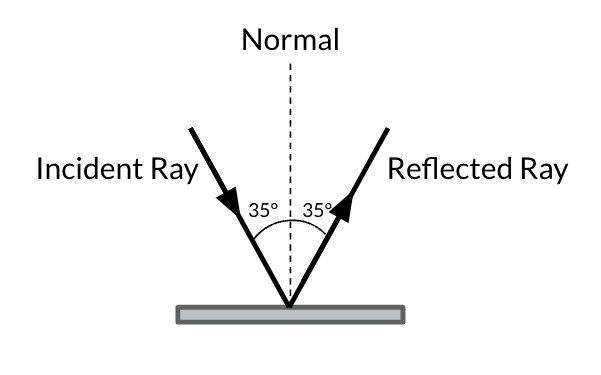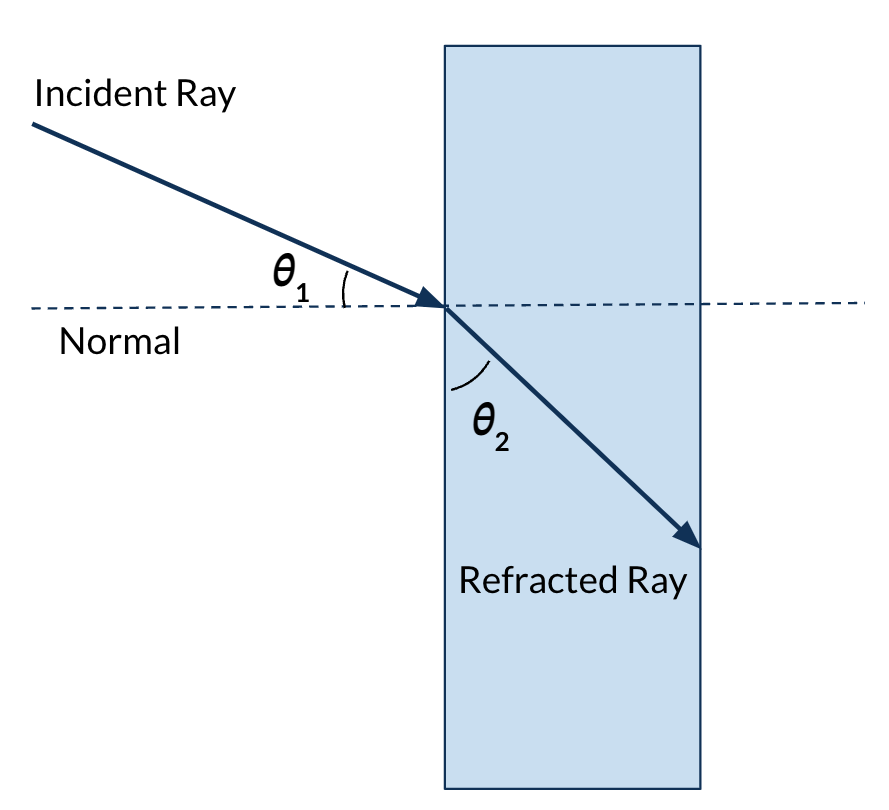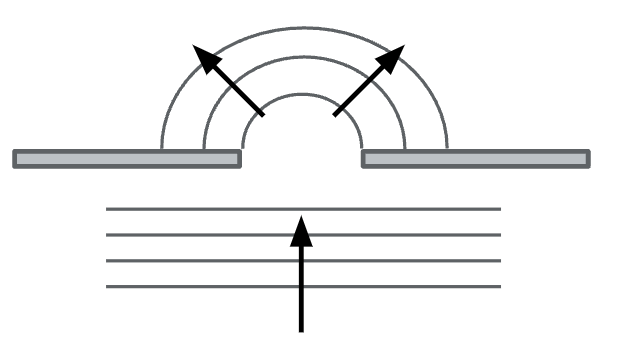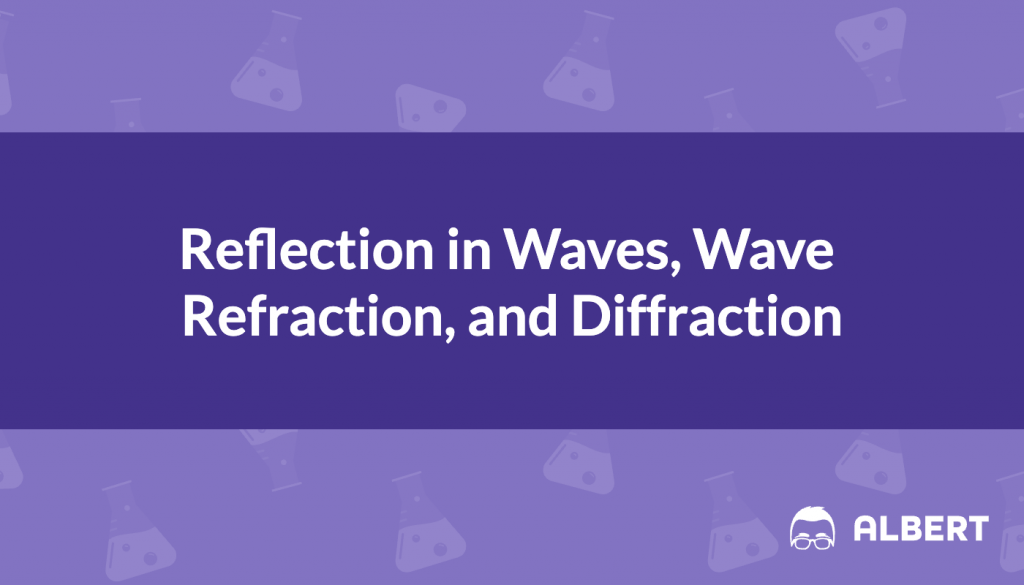Understanding the behavior of mechanical waves is essential for grasping many phenomena in our daily lives, from the echo of sound in a hall to the bending of light in a glass of water. In this post, we’ll focus on three fundamental concepts: reflection in waves, wave refraction, and diffraction in a wave. Whether you’re a student looking to solidify your understanding or just curious about how waves interact with their environment, this post will illuminate the science behind refraction, reflection, and diffraction.
What We Review
Overview of Waves
Waves are disturbances that propagate through a medium or space, transporting energy from one point to another without causing a permanent displacement of the medium itself. In simpler terms, waves are a way for energy to move through materials or even in a vacuum (as in the case of light waves).
Types of Waves
The classification of waves primarily depends on how they move and what medium they require for propagation. Here are some basic categorizations of types of waves and how they propagate:
- Mechanical Waves: These waves require a medium (like air, water, or a solid substance) to move through. Examples include sound waves and water waves.
- Electromagnetic Waves: These waves do not require a medium and can travel through a vacuum. Light, X-rays, and radio waves are examples.
- Transverse Waves: In these waves, the particles in the medium move at right angles to the direction of wave propagation. Light waves are transverse waves.
- Longitudinal Waves: The particles in the medium move in the same direction as the wave. Sound is an example of a longitudinal wave.
Sound and Light Waves
Two common examples that are often studied to understand wave behavior are sound and light waves.
- Sound Waves: These are mechanical and longitudinal waves that propagate through air, water, or solids. They have frequencies within the human audible range (approx. 20 Hz to 20,000 Hz). Check out our post on sound waves for an in-depth review.
- Light Waves: These are electromagnetic and transverse waves that can travel through a vacuum. Their frequencies are much higher than those of sound, and they are part of the electromagnetic spectrum which includes other wave types like radio waves and X-rays.
Reflection in Waves
Reflection in waves is the phenomenon where a wave encounters a boundary or interface and is turned back into its original medium. Unlike wave refraction, which involves a change in direction and medium, reflection keeps the wave in the same medium but reverses its direction.
Explanation of Reflection in Waves
When a wave encounters an obstacle or a boundary, part or all of the wave can be reflected, depending on various factors like the angle of incidence and the properties of the reflecting surface. The law of reflection states that the angle of incidence is equal to the angle of reflection:
\theta_1=\theta_2
Both angles are measured relative to the normal line, which is the imaginary line perpendicular to the boundary at the point where the wave hits. If a wave hits a boundary head-on, it will be reflected back along the same path.

Examples of Reflection in Waves
Let’s consider some examples. An echo is a sound that is reflected off a surface and heard again. For instance, if you shout in a large empty room or in a mountain range, you might hear your own voice coming back to you as an echo. A mirror is another classic example of light wave reflection. The light waves from an object hit the smooth surface of the mirror and are reflected back, forming an image.
A technological application of reflection occurs with radar and sonar. These technologies use reflected radio or sound waves to determine the distance to an object. A signal is sent out, and the time it takes for the signal to return after reflecting off an object is measured.
Understanding how reflection works in waves provides a basis for many technologies and natural phenomena. It’s a concept that you can easily observe in the world around you, offering both scientific insight and everyday applications.
Wave Refraction
Refraction in waves refers to the bending or change in direction of a wave as it passes from one medium into another. This bending occurs because the speed of the wave varies in different media, causing the wave to alter its course.

Explanation of Wave Refraction
When a wave encounters a change in medium, its speed and wavelength can change, while its frequency remains constant. The change in speed leads to a change in the wave’s direction, causing it to bend.
When working with light waves and optics, we often refer to Snell’s Law. This is the mathematical formulation for wave refraction:
n_1 \sin\theta_1 = n_2 \sin\theta_2
Here, n_1 and n_2 are the indices of refraction for the first and second mediums, respectively, \theta_1 and \theta_2 are the angles of incidence and refraction, also respectively.

The index of refraction is a dimensionless number that describes how fast light travels through a material. The higher the index, the slower the speed of light in that medium. For example, the index of refraction of air is approximately 1, while for water, it’s about 1.33.
Examples of Wave Refraction
One of the most common examples is the bending of light as it passes from air into water, like when you look at a straw in a glass of water and it appears bent or broken at the surface. Sound waves can also experience refraction due to temperature gradients in the air. This can cause sound to be heard over greater distances at night when the air near the ground is cooler than the air above.
During earthquakes, seismic waves refract as they pass through different layers of the Earth. This helps seismologists understand the Earth’s internal structure.
Diffraction in a Wave
Diffraction is another fascinating behavior that waves exhibit when they encounter obstacles or openings. Unlike reflection and refraction, which involve the redirection of waves, diffraction is all about the bending and spreading of waves around barriers or through openings. This phenomenon allows waves to propagate into regions of space that are geometrically shadowed by obstacles.
Explanation of Diffraction in a Wave
When a wave encounters a barrier with an opening that is approximately the same size as its wavelength, the wave will bend and spread out as it passes through. The greater the wavelength relative to the size of the opening or obstacle, the more significant the diffraction will be.

Examples of Diffraction
One example you might be familiar with is sound moving around a corner. If you stand around the corner from a marching band, you can still hear the music even though you’re not in a direct line of sight. This is because sound waves diffract or bend around corners. Have you ever noticed how you can still get a radio signal inside a building or among tall structures? That is also thanks to the diffraction of radio waves around obstacles.
In light waves, when light passes through a narrow slit, it spreads out on the other side. This phenomenon can be easily observed in a variety of optical experiments, like Young’s double-slit experiment. Further technological applications occur in medical imaging. Techniques like X-ray crystallography rely on the diffraction of X-rays through biological tissues or crystal structures to create images.
Understanding diffraction adds another layer to our comprehension of how waves interact with their environment. This knowledge has a wide range of applications, from engineering to medicine, and can be seen in various phenomena around us.
Conclusion
In summary, understanding how reflection, refraction, and diffraction occur in waves provides valuable insights into the world around us. We’ve explored how waves bend, bounce, and spread, detailing each phenomenon with practical examples. Whether it’s the science behind a rainbow, the echo in a hall, or why you can hear a conversation from around a corner, these fundamental concepts illuminate the mechanics at play. This foundational knowledge not only enhances our appreciation for everyday occurrences but also paves the way for technological advancements in various fields. So the next time you witness an intriguing wave behavior, you’ll likely understand the science that makes it possible.








